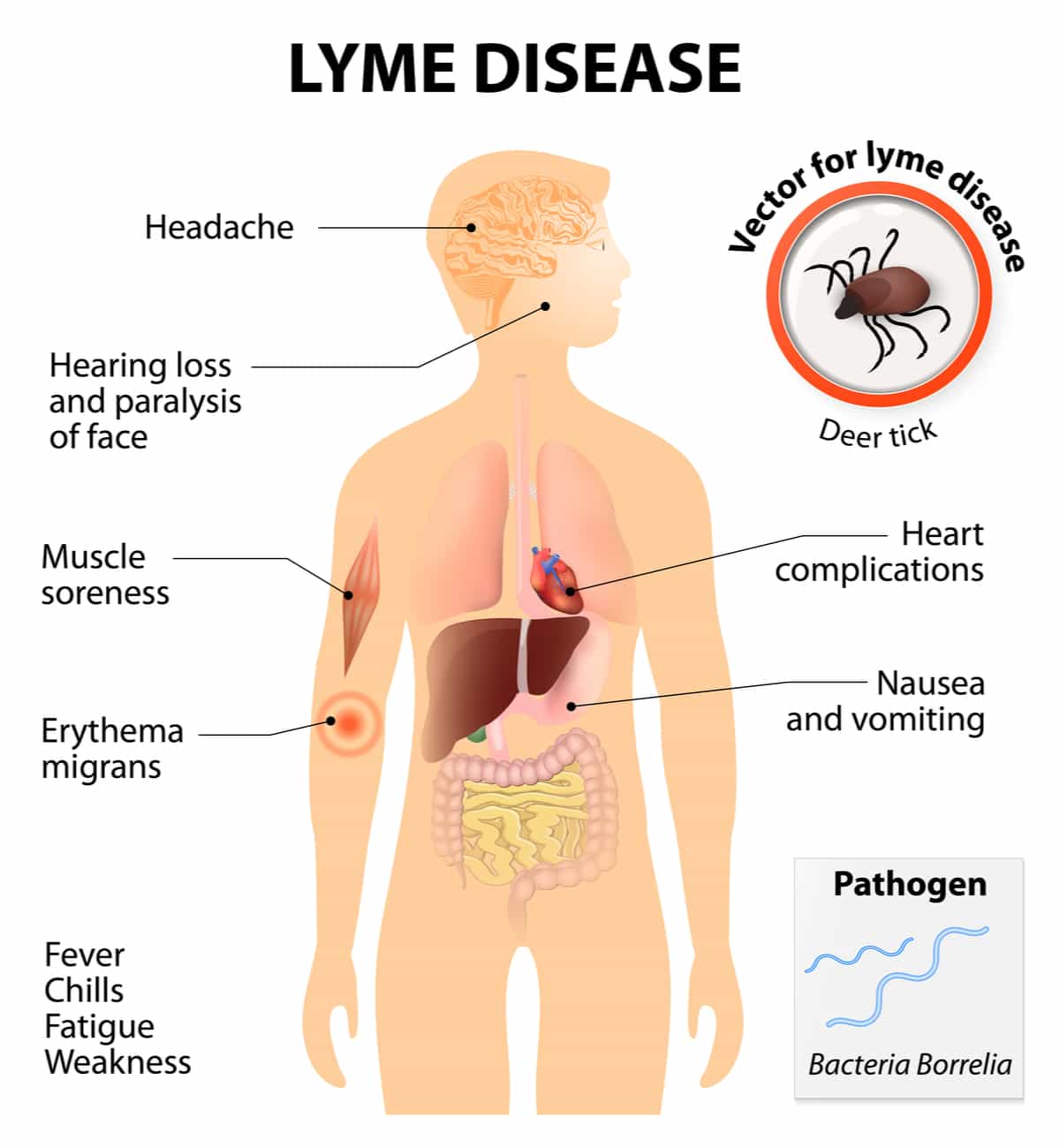Several vector diseases are not as common in the United States as they are in tropical countries. But Lyme disease is perhaps one of the most common vector diseases in North America. It is caused by a type of spirochete bacteria and transmitted through a tick bite.
In this article, we’re explaining the basics of Lyme disease, a disease that causes a vast array of signs and symptoms, sometimes very mysterious and difficult to diagnose. After understanding the symptoms and the cause of the disease, we’re also going through the diagnostic steps and the treatment options available for Lyme disease patients.
Overview

Lyme disease is a vector-borne disease, one that is transmitted through a tick bite. The animal is infected with a spirochete bacterium known as Borrelia burgdorferi, it is transmitted to humans, and they develop a multi-system disease.
In the United States, Lyme disease is diagnosed in over 30,000 patients every year. It is also common in many countries in Asia and Europe. However, most patients do not recall any tick bite, and not every physical exam shows one of them. Tick bites and Lyme disease are more common in people who spend time in grassy spaces or those who live or travel to endemic areas.
The disease has been recognized for many years, and the first records that suggest Lyme disease go back to 1883. However, the name Lyme disease came from the decade of 1970 due to an arthritis outbreak in pediatric patients in Lyme, Connecticut.
